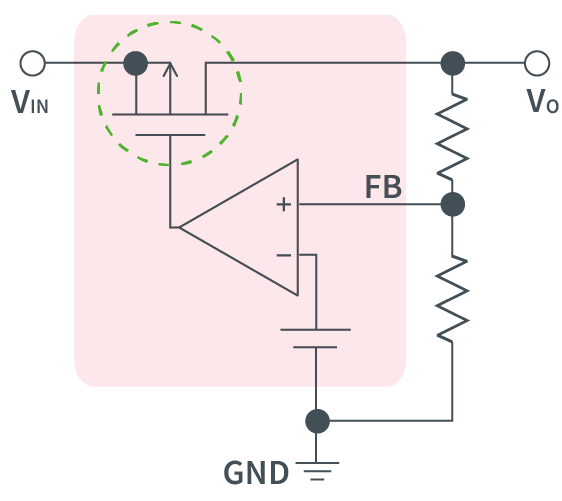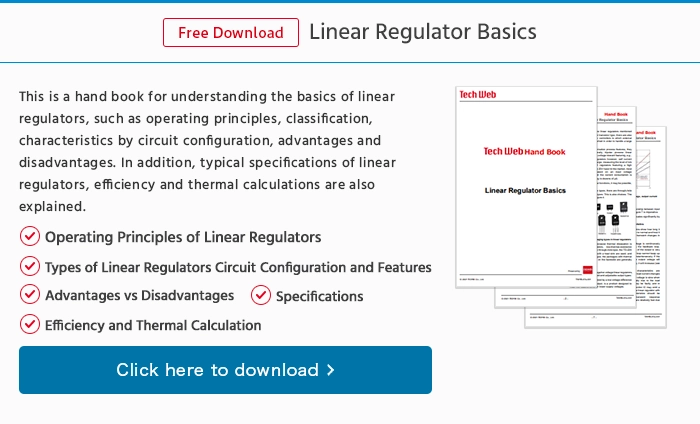LDO <What is an LDO?>
LDO, which stands for Low Dropout, refers to an LDO regulator that can operate at a low potential difference between input and output.
It is sometimes referred to as a low-loss or saturation type linear regulator.
Although there are no strict numerical definitions regarding the potential difference between the input and output of an LDO, generally the lowest voltage at which the regulator can operate stably is less than 1V.
For example, in the case of an IC requiring 3.3V, an LDO with a low potential difference is needed since a standard type cannot produce 3.3V from 5V. As a result, even at the same output voltage the input voltage of an LDO can be set much lower.
This efficiency is crucial for minimizing power consumption, especially in applications requiring high output current.
Operating at a lower potential difference makes it possible to reduce energy loss and suppress heat generation.
Dropout Voltage in LDO Regulators
Inside a linear regulator a transistor is placed between VIN and VO and the minimum potential difference necessary to achieve stable transistor operation is called the dropout voltage. The maximum load-current impacts the regulator's ability to maintain stable output voltage under varying conditions.
When the voltage difference between the input and output falls below the dropout voltage the transistor cannot maintain stable operation and the output voltage decreases. The maximum load current is a critical performance metric for LDOs, affecting overall load regulation and transient response.

In this way, for both standard linear regulators and LDOs the minimum necessary input voltage is set in order to ensure operation. In this case VO + Dropout Voltage is the minimum operating voltage.
When the input voltage VIN is below the minimum operating voltage the output voltage will not be stable.







